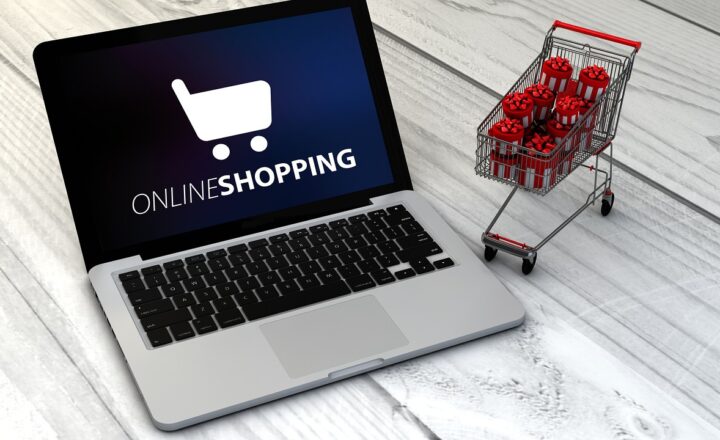How to Avoid Falling for Influencer Hype
November 10, 2024

In the age of social media, influencers hold tremendous power in shaping opinions and driving consumer behavior. With their curated feeds and engaging content, they have become trusted sources for product recommendations, lifestyle choices, and even political views. However, the rise of influencer culture also brings forth a critical question: How can we avoid falling for influencer hype?
As consumers, it’s essential to navigate this landscape with a discerning eye. This article will explore strategies to help you critically evaluate influencer claims, understand the psychology behind influencer marketing, and make informed decisions without succumbing to hype.
1. Understand the Influencer Landscape
The influencer industry has diversified significantly over the past decade, encompassing various niches, products, and platforms. Influencers can be categorized into levels based on their following: mega, macro, micro, and nano influencers. Each level has different engagement rates, audience demographics, and credibility.
While mega and macro influencers often boast impressive follower counts, they may lack the personal connection that micro and nano influencers offer. These smaller influencers typically have a more engaged audience, providing more authentic recommendations. Understanding these dynamics can help you evaluate whom to trust and why.
Before engaging with influencer content, it’s crucial to consider:
- Follower Count: High numbers can indicate popularity but not necessarily engagement or credibility.
- Niche Expertise: Are they credible in the area they promote? Look for influencers with a background or genuine passion for the subject matter.
- Content Quality: Are the posts well-researched, informative, and visually appealing? Quality can often hint at professionalism and sincerity.
By grasping the influencer landscape, you equip yourself to assess their motivations and the potential hype surrounding their recommendations.
2. Analyze the Content Critically
Not all influencer content is created equal. As consumers, it’s vital to approach influencer posts with a critical mind. Here’s how:
- Check for Transparency: Look for indicators of paid partnership or sponsorship. Influencer marketing is a business, and transparency is key. If the influencer doesn’t disclose their relationship with the brand, it may signal unethical promotion.
- Evaluate the Claims: Are the product claims substantiated by evidence? Look for scientific studies, testimonials, or additional sources backing up the influencer’s assertions. If none exist, proceed with skepticism.
- Cross-Reference Information: Before making a purchase decision, seek reviews and opinions from multiple sources. This practice ensures you’re not relying solely on one individual’s perspective, which may be influenced by business interests.
Training yourself to analyze content critically will minimize the risk of falling for exaggerated claims and promote more informed decision-making.
3. Understand the Psychology of Influence
Influencer marketing capitalizes on specific cognitive biases and psychological principles that drive human behavior:
- Social Proof: We tend to follow the behavior of others, especially those we admire. Understanding this bias can help you realize when you’re being swayed by popularity rather than genuine interest or need.
- FOMO (Fear of Missing Out): Influencers often create urgency through limited-time offers or trends. Recognizing this tactic can deter impulsive buying decisions rooted in fear rather than genuine desire.
- Authority Bias: The tendency to trust opinions from perceived experts can lead you astray if you don’t thoroughly vet the influencer’s motives or qualifications in the area. Recognizing this bias is instrumental in making informed choices.
Understanding these psychological influences allows you to take a step back and assess when your emotions are driving your purchasing decisions.
4. Identify the Red Flags
As you navigate the influencer landscape, it’s essential to be on the lookout for potential red flags that may indicate you’re being swayed by hype:
- Overly Hype-driven Language: If the influencer’s language is sensationalistic and lacks substance, they may be more interested in clicks than genuine recommendations. Look for influencers that provide thorough explanations and balanced views rather than exaggerated promises.
- Inconsistent Recommendations: Repeatedly fluctuating preferences or endorsements can raise concerns about authenticity. If the influencer promotes a new product every week, it may indicate a lack of genuine belief in their recommendations.
- High-Pressure Tactics: Be wary of influencers who create pressure to buy immediately, often through limited offers or aggressive calls to action. Genuine recommendations should empower, not pressure, consumers to make informed choices.
Identifying these red flags will help you filter out disingenuous influencers and concentrate on those who provide authentic value.
5. Cultivate Your Trusted Sources
To protect yourself from influencer hype, develop a list of trusted sources who prioritize credibility and authenticity:
- Follow Experts in the Field: Seek influencers who demonstrate expertise or credibility in the area they promote. This includes qualified professionals, industry veterans, or respected voices in the niche.
- Engage with Community Feedback: Communities and forums dedicated to specific topics or products often provide excellent insights. Engaging with others’ experiences can enhance your understanding and provide valuable recommendations that resonate with authentic experiences.
- Research Brands Carefully: When following influencers, take the time to understand the brands they collaborate with. Opt for companies that align with your values and have a reputation for ethical practices and quality products.
Creating your trusted sources helps you develop a more discerning perspective toward influencer recommendations, resulting in informed decisions that suit your values and needs.
6. Conclusion: Empowered Consumerism
Consumers in the influencer age face significant challenges in discerning credible recommendations from hype. By understanding the influencer landscape, analyzing content critically, recognizing psychological influences, identifying red flags, and cultivating trusted sources, you position yourself as an empowered consumer who can navigate the digital marketplace confidently.
Stay vigilant, remain curious, and continue building your knowledge on influencer dynamics. This proactive approach ensures you make informed decisions that align with your needs, values, and well-being, ultimately benefiting both you and the influencers who genuinely provide positive contributions to your life.
Remember that not all influencer content is a hype; with the right tools and mindset, you can enjoy authentic recommendations tailored to your true interests. Don’t let hype dictate your choices—embrace your role as a savvy consumer navigating this ever-evolving landscape.






